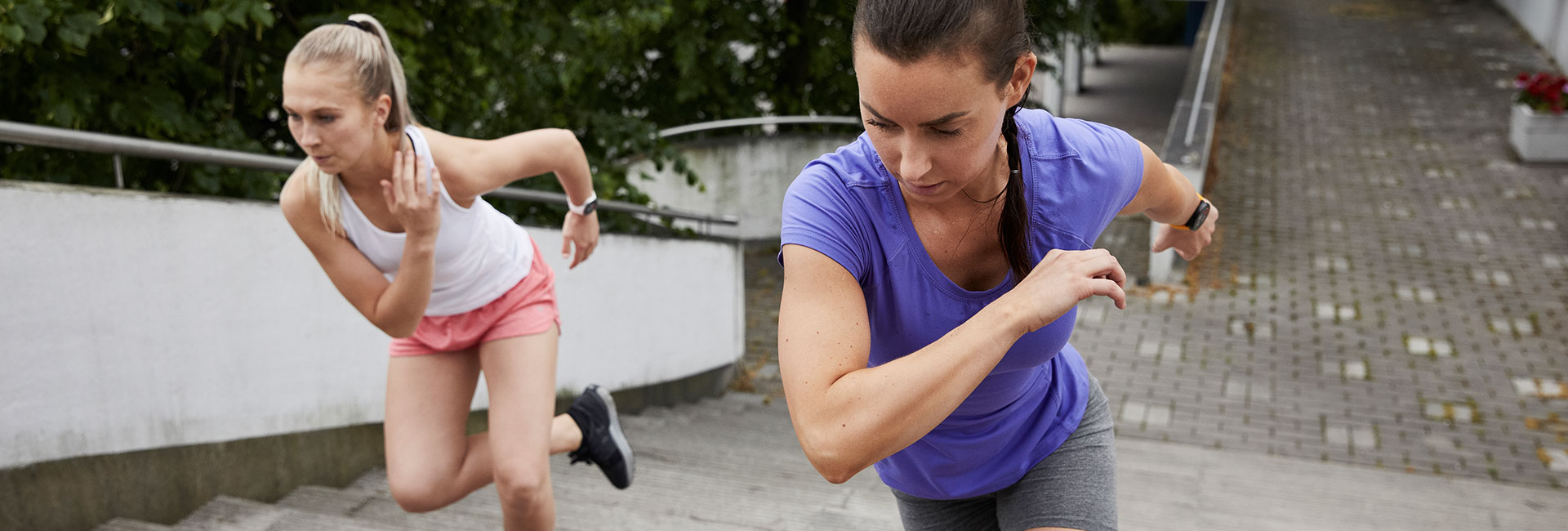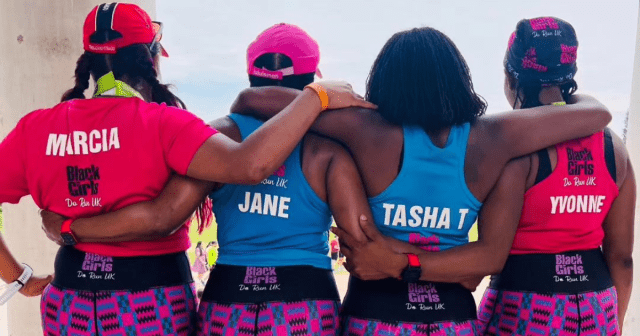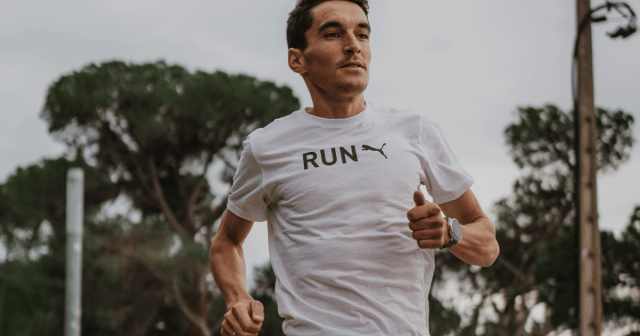When George Mallory was asked why he climbed Mount Everest, he famously replied, “because it’s there.”
Why?
Because going up is great for going forward.
We’re not suggesting runners aim to climb the tallest peak in the world — that would be a very different article — but it’s time runners look at the staircase at the park or the local stadium bleachers with the same can-do attitude towards getting out of their comfort zone.
There’s a number of reasons why stair workouts are the perfect supplement for run-heavy training regimens. Stair workouts use a plyometric motion, which strengthens not only the leg muscles (and the smaller, often-underdeveloped stabilizer muscles), but provides a healthy dose of high-intensity cardio to test your lungs and heart.
But don’t take our word for it — for some inside scoop we turned to Dr. Caitlin Glenn Sapp, a USA Triathlon Certified Coach, ACSM Personal Trainer and Doctor of Physical Therapy (DPT). She’s the founder of Crew Racing and Rehab, and is a go-to expert on all things endurance.
Below she shares her insight on the dos and don’ts of stair workouts for runners, and provides two samples you can integrate into your training calendar right now.
Why are stair workouts beneficial for runners? What do these types of workouts improve?
Stair workouts help to promote skill development that stand alone running does not. Running is a constrained movement that alone doesn’t expand the athlete’s force production or skill set needed to improve running.
All these elements benefit runners.
Stair workouts fall into the category of plyometrics or neuromuscular training. These kinds of programs have demonstrated excellent results which include decreased injury rates, improvements in speed and agility, improved vertical jump, and improved ground contact times.
How can a runner start to incorporate stair workouts into their plan?
For safety purposes, it is best to perform a stair workout early on in the session. If this is the only session of the day, and not part of a larger routine (i.e. a weight training session, a run) my biggest suggestion is to keep it precise and short.
If at any point you begin to feel your form falter, call it a day.
These kinds of sessions work to develop skill, technique, and force. They need to be performed with good, explosive form.
For runners, a stair program can be performed after a short warm-up. For example, warm up over one mile, perform a short stair workout lasting five to 10 minutes, then finish the duration of the run.
Plyometrics are great because they don’t have to be done frequently or for a long duration. You can incorporate plyometrics such as a stair workout, box jumps or jump roping, two to three times weekly for five to 10 minutes.
What do a couple sample stair workouts for runners look like?
Session 1
Warm up over 1 mile with light jogging.
Perform 5 minutes of run drills: High knees, butt kicks, grapevine, skips, strides.
Repeat 2x through:
- Run continuously up and down the flight of stairs for 2 minutes. 60 seconds rest.
- Single leg hop up the stairs 15x right leg, walk back down. Single leg hop up the stairs 15x left leg, walk back down. 60 seconds rest.
- Double leg hop 20x up the stairs, walk back down, 60 seconds rest.
Run continuously up and down the flight of stairs for 2 minutes.
Cool down 10 minutes with a walk or easy jog.
Session 2
Warm up for 10-15 minutes.
- This can include jogging and run drills, e.g. high knees, butt kicks, grapevine, skips, strides.
Repeat 6x through:
- Run hard up the staircase for 20 seconds
- Jog back down
- 15 seconds rest
Do 4x100m strides focusing on good run form.
Finish the session with a 20-30-minute aerobic run.
What metrics should you monitor during these workouts?
Heart rate is always a good measure of intensity. Another way to monitor this kind of workout is to go by how the session feels. Or better yet, monitor your training load based on both perceived and measured (cardio and muscle) load.
If your running form begins to suffer, you’re beginning to feel fatigued or aren’t able to safely perform the exercise, then you’re best ending the session.
Should stairs be incorporated into a run, or are they a stand-alone workout?
I absolutely think stairs can be incorporated into a run. This is a fun way to work on skill development and still get an efficient run in. As I mentioned before, plyometrics, such as stair training, does not need to be done at a high frequency or very often.
If you live close to a track with stadium stairs, you could run to the track and perform five to ten minutes of various stair drills, then run home.
what are some ways to make stair workouts fun/engaging/less miserable?
You can make these workouts more engaging by performing them with a group. Another way to make the session more fun is to design a workout playlist that has a specific beat to it and hop to the beat.
For jump roping, I like to suggest setting a metronome between 180 to 220 bpm and jumping to that pattern. Find an efficient tempo to perform a stair workout to and vary the pace throughout to change the intensities.
Are there any risks/things to watch out for?
This sort of activity is one the athlete would want to perform early on in the workout. Whether doing a strength training session or a run, perform the stair workout prior to being fatigued. The safest way to do a stair workout is to start with a short warm-up followed by the session.
With any sort of hopping or jumping drill, don’t start with the height of the object greater than mid-shin height. Develop good clearance and soft landing at this height before progressing.
If you liked this post, don’t forget to share so that others can find it, too.
Or give it a thumbs up!
I like this article
Please note that the information provided in the Polar Blog articles cannot replace individual advice from health professionals. Please consult your physician before starting a new fitness program.




